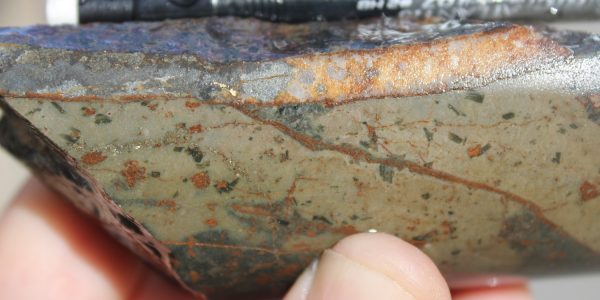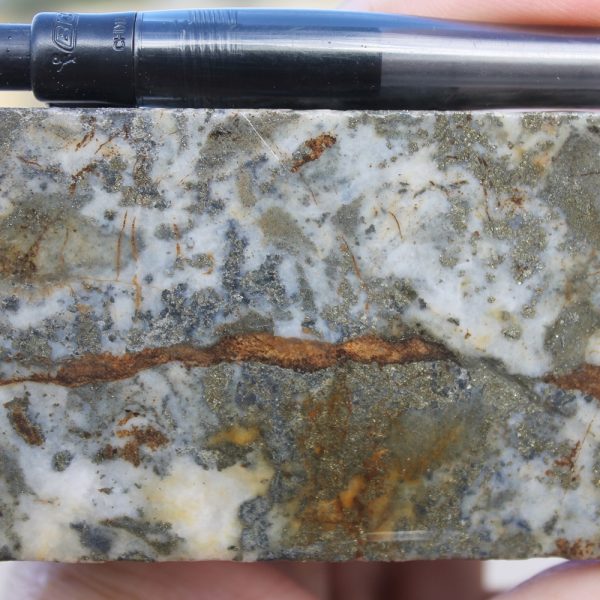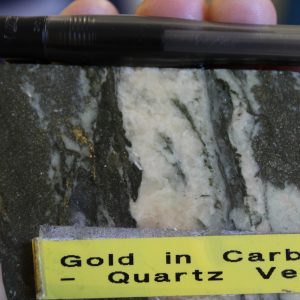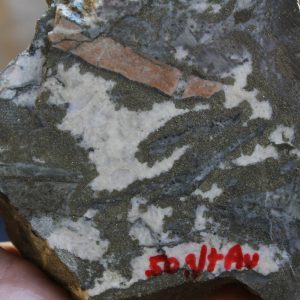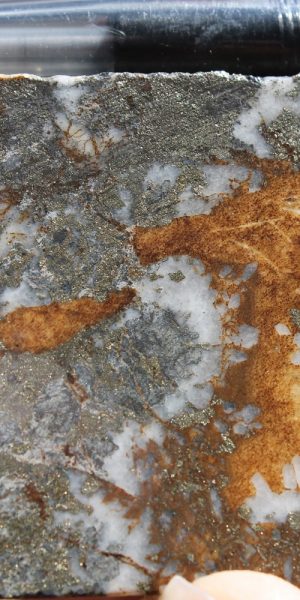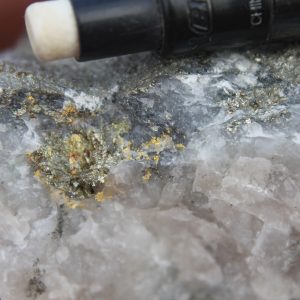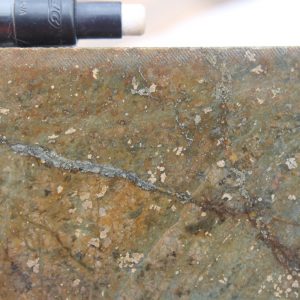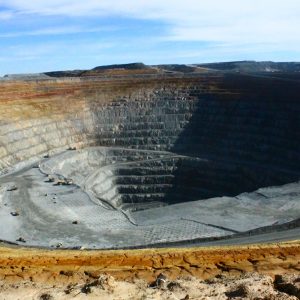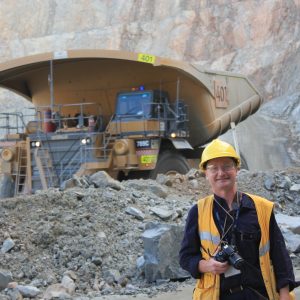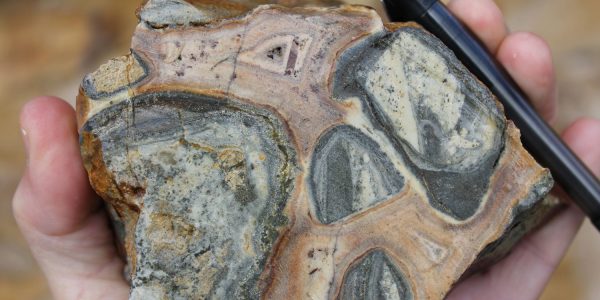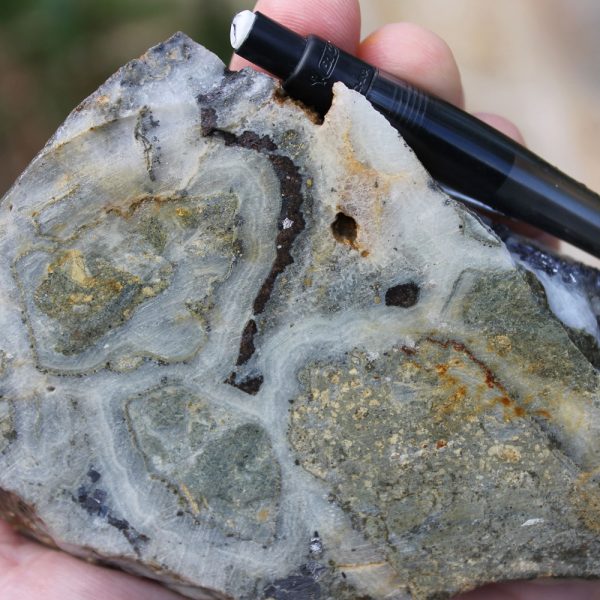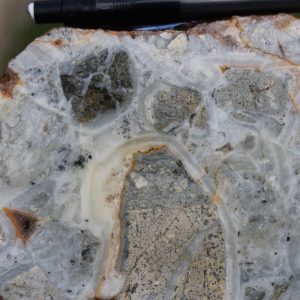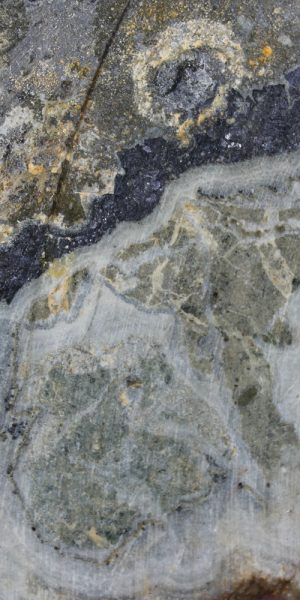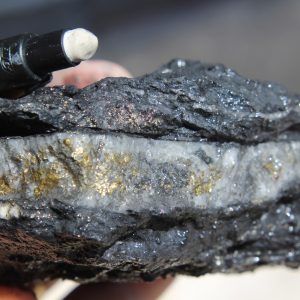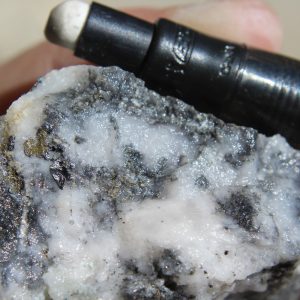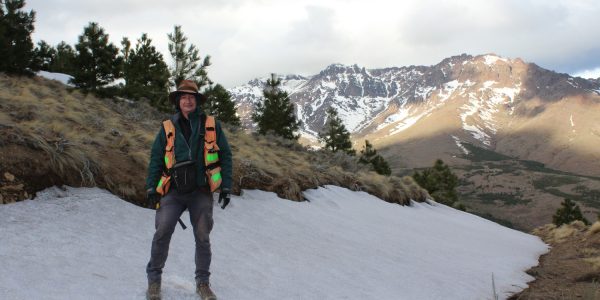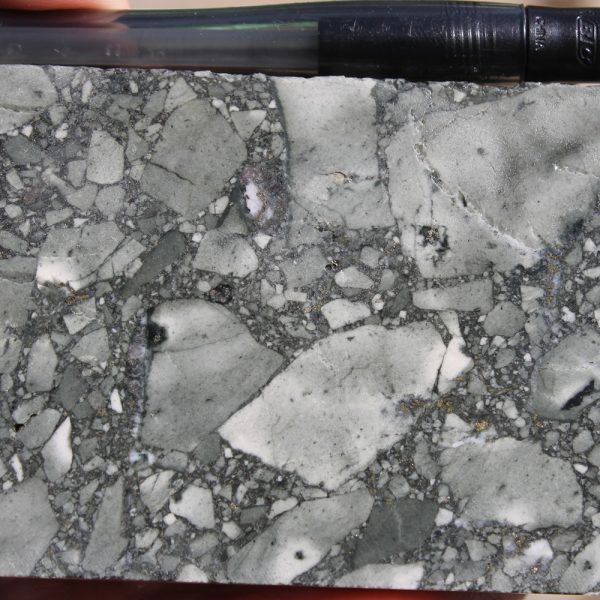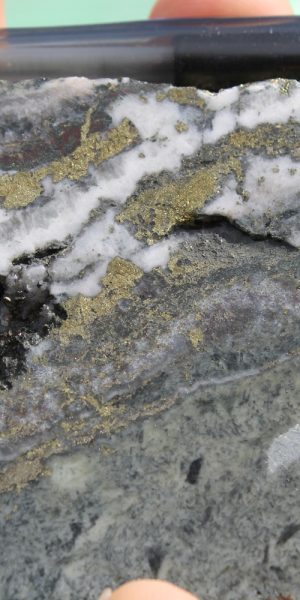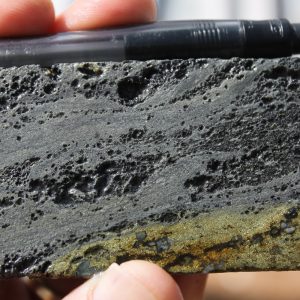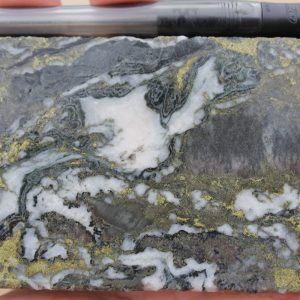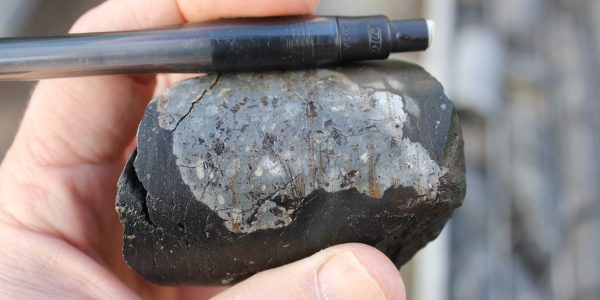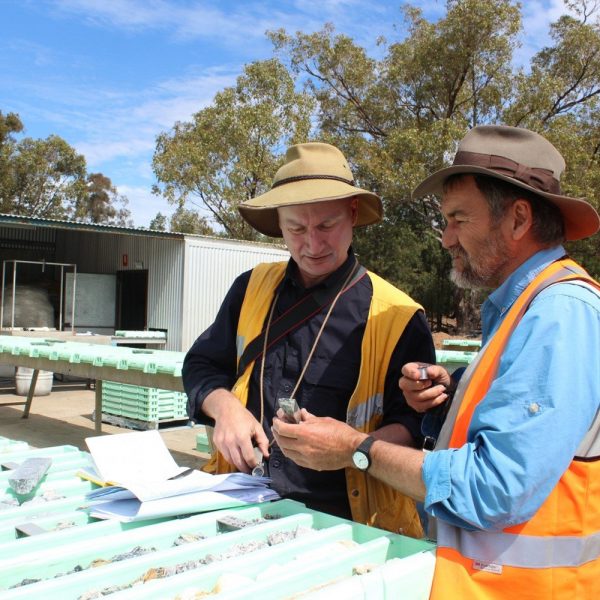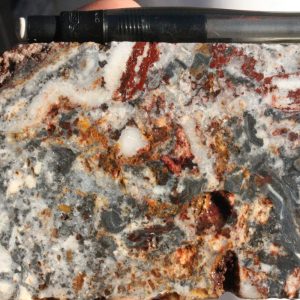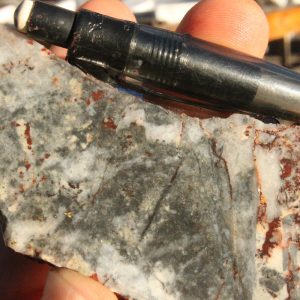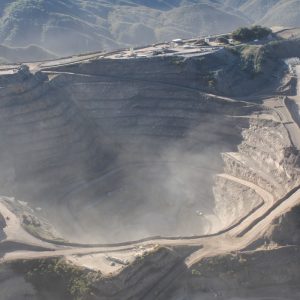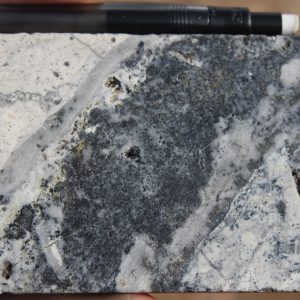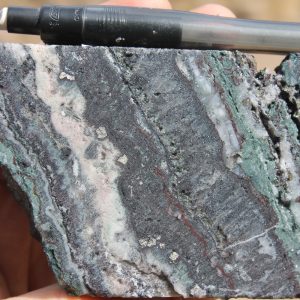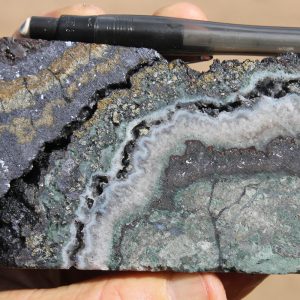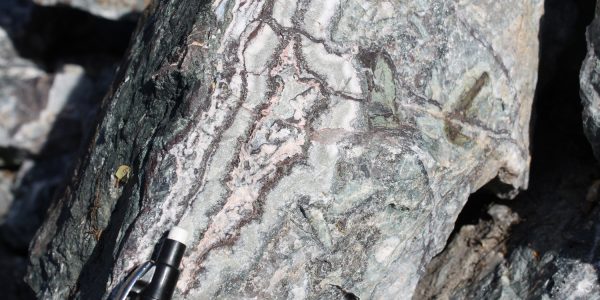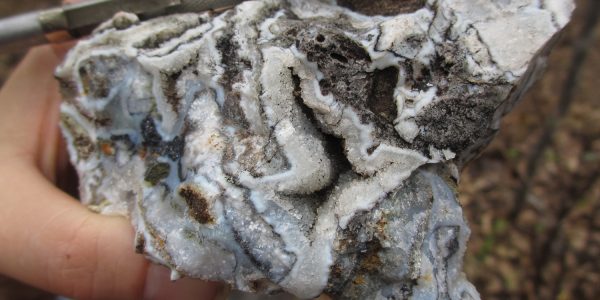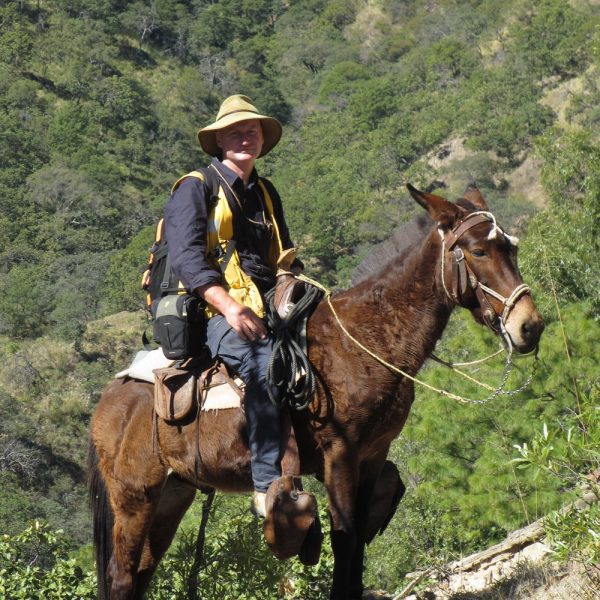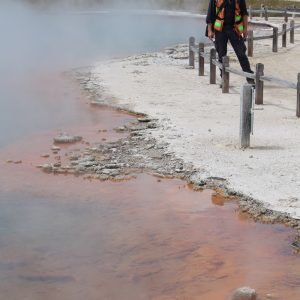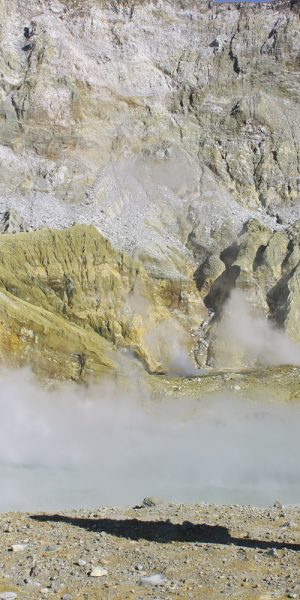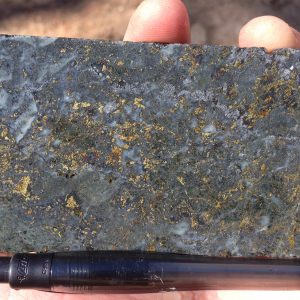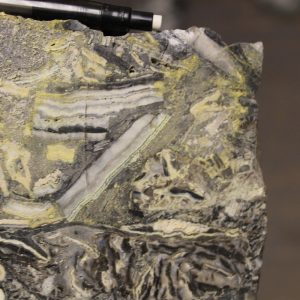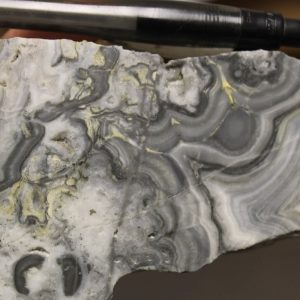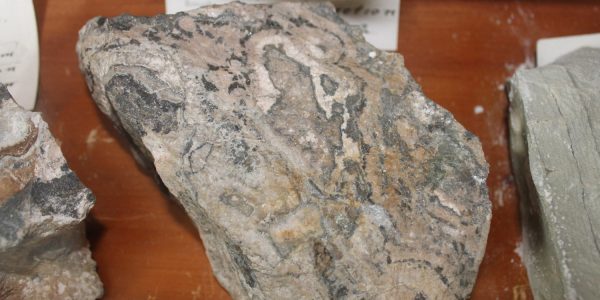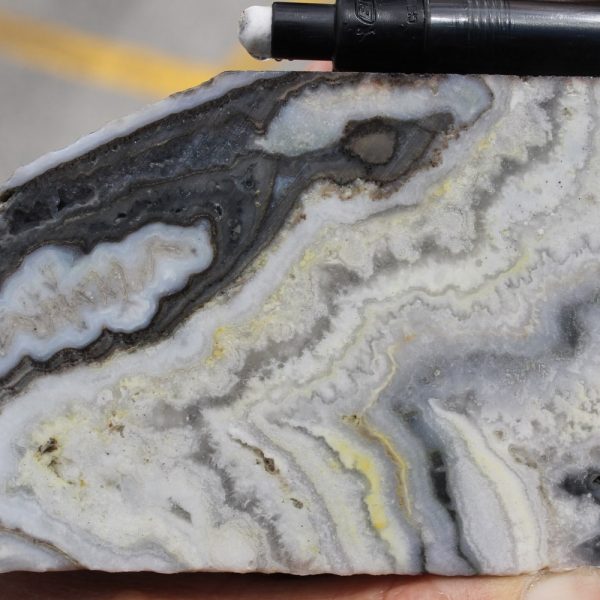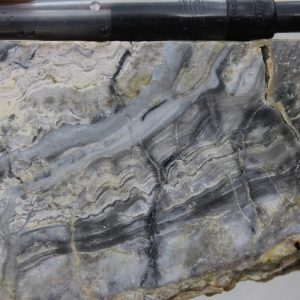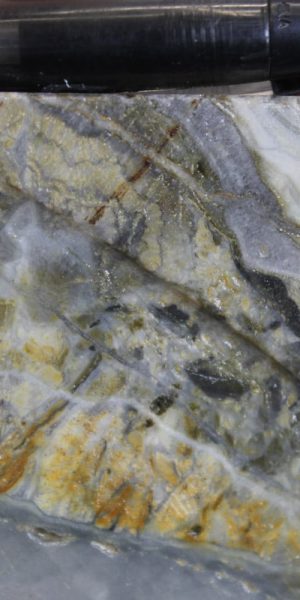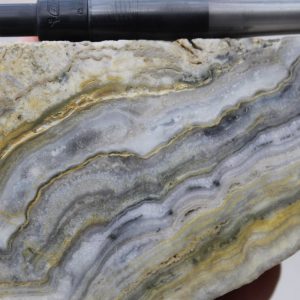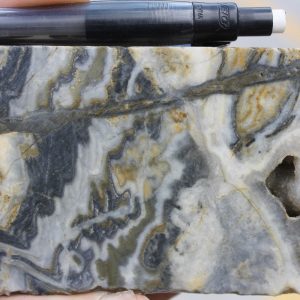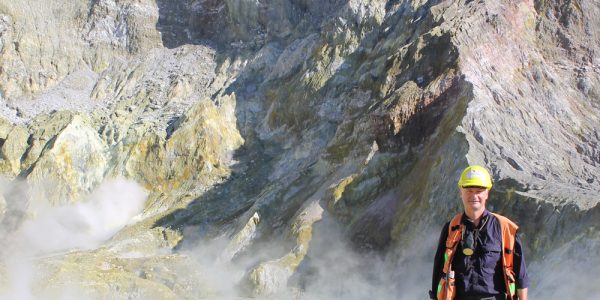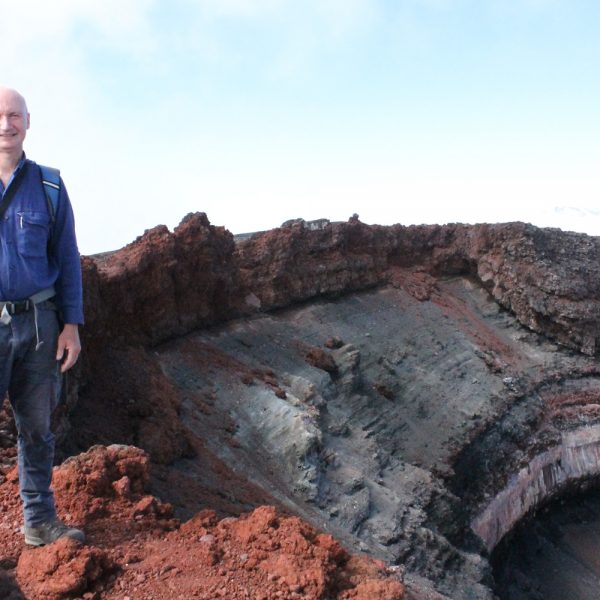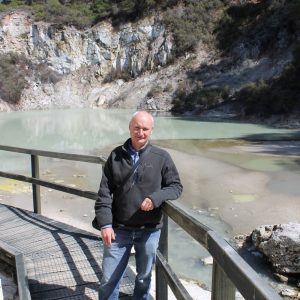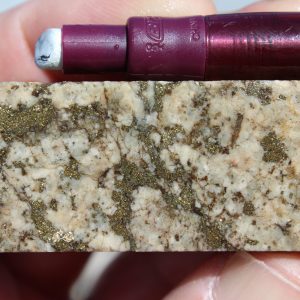Low sulphidation carbonate base-metal epithermal Au-Ag mineralisation (as defined by Corbett and Leach, 1998) hosts highest Au contents within ore shoots developed by the coincidence of several factors cited (Corbett, 2013) as:
- Competent host rocks such as andesite flows or welded tuffs which fracture well to promote through-going fissure vein formation, but may locally be obscured by incompetent rocks such as lapilli tuffs and volcaniclastic sediments which do not fracture well, especially where clay altered. Blind vein targets may occur in these settings where tuffs and volcaniclastic sediments overlie andesite.
- Dilatant structures, that best host carbonate-base metal Au vein mineralisation, typically occur in the steeper dipping parts of listric faults in extensional settings such that ore shoots display overall flat plunges as precious metal grades and vein thickness decline in flatter dipping parts of listric faults. Components of strike-slip deformation may result in the development of flexures defined as changes in vein strike which may host steep plunging components of ore shoots superimposed on the overall flat plunges. Flat plunging ore shoots may locally occur within the flatter dipping parts of reverse faults in compressional settings (Corbett, 2012). Moderate dipping vein-hosting structures might refract to steeper dips as they pass from incompetent tuff to competent andesite, and so promote the formation of flat plunging ore shoots. Pencil-like ore shoots of varying orientations may result from fluid mixing at the intersection of structures carrying rising pregnant ore fluids with collapsing oxidised or bi-carbonate ground waters.
- Low sulphidation epithermal carbonate-base metal Ag-Au veins display vertical zonation in systems that may develop over 1km vertical extents, and so the metal budget is partly controlled by the level of erosion. A typical metal zonation varies from Cu + Au at depth through Au-Ag with Zn>Pb and rising to become Ag-rich in the upper portions while Sb, Hg and As may be anomalous above the vein zone and may be used as pathfinder elements. The upper portions of many vein systems evidenced by the presence of white low Fe sphalerite usually display higher precious metal grades.
- Efficient mechanisms of Au deposition provided by the mixing of rising pregnant ore fluids with oxidising evolved ground waters which facilitate enhanced Au deposition (Leach and Corbett, 1998). Gangue minerals within the ore assemblage which provide evidence of the fluid mixing include hypogene haematite for oxygenated ground waters, Mg, Mn or Fe carbonates (ankerite, rhodochrosite or siderite) for bicarbonate waters and kaolin for acid sulphate ground waters.

